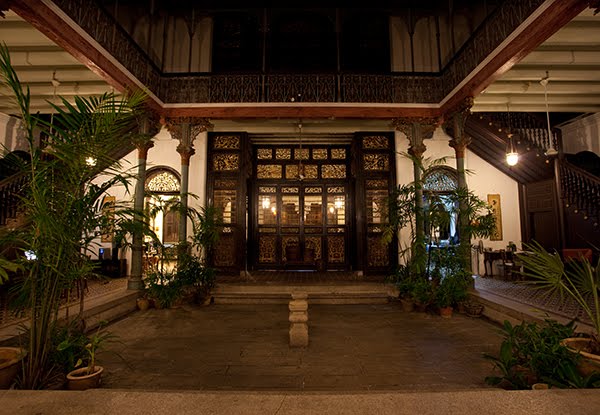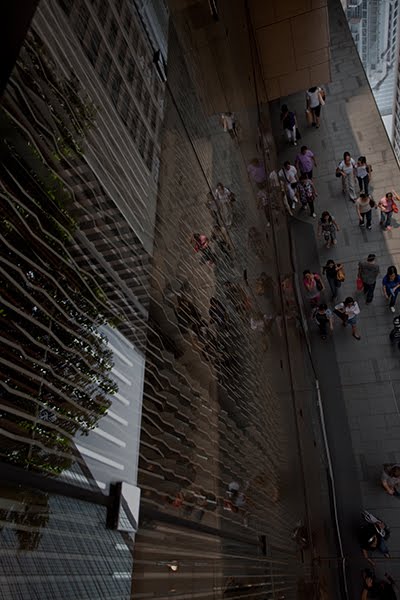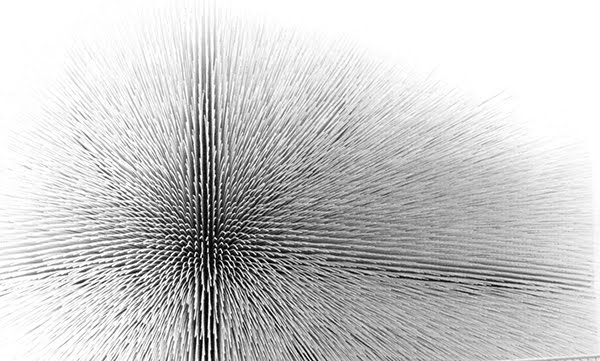After reaching Malaysia and traveling by bus for 5 hours we arrived in the city of Penang, where we were rewarded with a stay at the Cheong Fatt Tze Mansion. This historical mansion was built by the business tycoon Cheong Fatt Tze, a self-made millionaire who has been called the JP Morgan of the East. The building is centered around an open-aired courtyard, which serves as the heart of the house, where the chi is supposed to flow the strongest. Designed according to Feng-Shui principles, the house is supposed to be perfect according to the ancient art. After getting the chance to experience the mansion for a few days, its undeniable that the architecture and the atmosphere it creates lives up to its legacy.
Monday, December 20, 2010
Wednesday, December 1, 2010
the Vietnamese AntiThreat
Far from threatening, Vietam was one of the most welcoming countries we visited along our adventure. Hanoi’s streets were continuously alive with vendors selling everything from fresh fruit to fully cooked meals, transforming each parcel of sidewalk into a store… The most amazing part was how warm and friendly everyone was, even if when they knew no English… While there we also made it to Ha Long Bay, a gorgeous string of rocky islands that spans hundred of miles, complete with fruit pirates and water communities.
Wednesday, September 1, 2010
Reflections
While exploring Hong Kong I was playing with the photographic opportunities reflective surfaces offer. Anything from glass, to water, to sunglasses can open up a range of interesting perspectives. This adds an extra element of visual interest, and can even become the subject of the photo.
In the first photo I used the glass façade and overhang of a building to capture the reflection of pedestrians. While it gives the illusion of a bird’s eye vantage point, the photo was taken from the ground and then flipped, which is betrayed by the inverted buildings in the top-right corner.
In the first photo I used the glass façade and overhang of a building to capture the reflection of pedestrians. While it gives the illusion of a bird’s eye vantage point, the photo was taken from the ground and then flipped, which is betrayed by the inverted buildings in the top-right corner.
Sunday, August 29, 2010
Modern Shanghai
Shanghai is a city of intense dichotomy. Having really taken to heart the urban urge, it has been developed at an unprecedented rate, almost outpacing its inhabitants. Erecting its skyline within the last twenty years, the city presents the contrast of an ancient culture within a contemporary urban fabric.

Monday, August 2, 2010
The Iron Fist..."Mao's Watching You"
In Beijing, the Forbidden City is not only a popular tourist attraction, but also a symbol of the Communist Party of China’s power and control. At its entrance, above tourists and tourguides, hangs a giant portrait of Mao Zedong, the founder of communist China. Directly adjacent to Tian’anmen Square, Mao, along with security cameras and military patrols, keeps watch for any threats to communism, failing to recognize the capitalist machine at work through street-vendors and trinket-dealers.
Tuesday, July 20, 2010
Sukigi Fish Market, Tokyo
Of all the places in Tokyo I experienced, the fish market stood in sharp contrast. As an incubator of a living culture it felt the realest. In a society that is so concerned with “saving face,” it was refreshing to see people who weren’t as constrained, even if they were engaged in a gruesome business.
Wednesday, July 7, 2010
Japan Immortalized
On the way to Tokyo we made a stop in Tsumago, an old post town. We stayed in a traditional Ryokan, slept on tatami mats and experienced the village, which has been preserved from its Samurai days (even the postal service retained their traditional uniforms). During the stay I enjoyed a short talk with a local farmer, of which I understood almost nothing. Though overall there was a great deal of warmth to the people and the whole community.
Wednesday, June 30, 2010
A Tradition of Excellence, Temples & Modernism
The city of Kyoto has a rich cultural history preserved in their temple architecture. This combined with their excellence in modern architecture shows a trend of attention to spatial quality and detail.
A Culture of Escape
Overall, Japanese society is uniform and homogenous, one that tends to repress outliers and promote hard work. This combined with their intensely polite and reserved social persona breeds the necessity for outlets to relieve mental stress. Although these releases tend to be extreme, they are so pervasive that they have become socially acceptable. This includes chain-smoking, heavy drinking and a large appetite for gambling, anime, and sexual fetishism. Pachinko is one such diversion, a form of gambling that heavily contrasts the Japanese personality - imagine a mixture of slots and video games, and then add in blaring sound effects and flashing lights capable of causing 2nd degree burns on your retinas.
Sunday, June 6, 2010
The Art of Calligraphy
I am amazed by the degree of artistry that goes into every character. An art that has been hundreds of years in formation, seems to be as pervasive in Kyoto as are its temples. Japanese Calligraphy has truly evolved into its own art form, one that reflects the care and attention that’s ingrained into Japanese culture.
Saturday, June 5, 2010
An Asian Summer
In an attempt to better understand Eastern life, culture, and architecture I’m spending the summer traveling the expanse of Southeast Asia, a part of the world that both fascinates and excites. While I'm in Hong Kong at the moment, I started the journey in Kyoto, Japan and made my way through Tokyo, Beijing, and Shanghai, amongst others.
Although I planned to start posting earlier, I recently encountered a setback with the Great Chinese Firewall. For some reason China seems to think that my blog could be harmful to their people and even weaken the grip of their regime, which is honestly quite flattering. Otherwise, besides the internet filtering and the occasional military escort, communism in China seems to be greatly diluted by a strong love for capitalism.
Although I planned to start posting earlier, I recently encountered a setback with the Great Chinese Firewall. For some reason China seems to think that my blog could be harmful to their people and even weaken the grip of their regime, which is honestly quite flattering. Otherwise, besides the internet filtering and the occasional military escort, communism in China seems to be greatly diluted by a strong love for capitalism.
Subscribe to:
Posts (Atom)






























